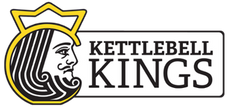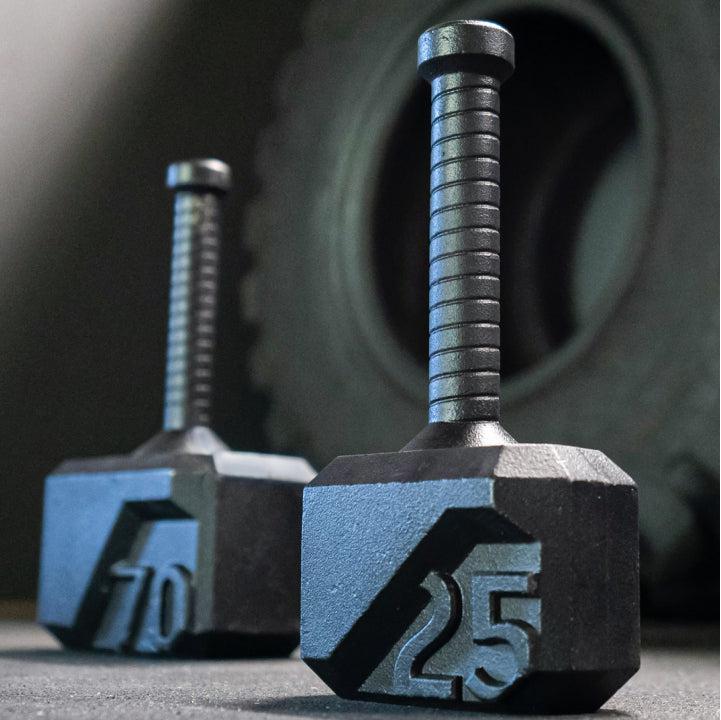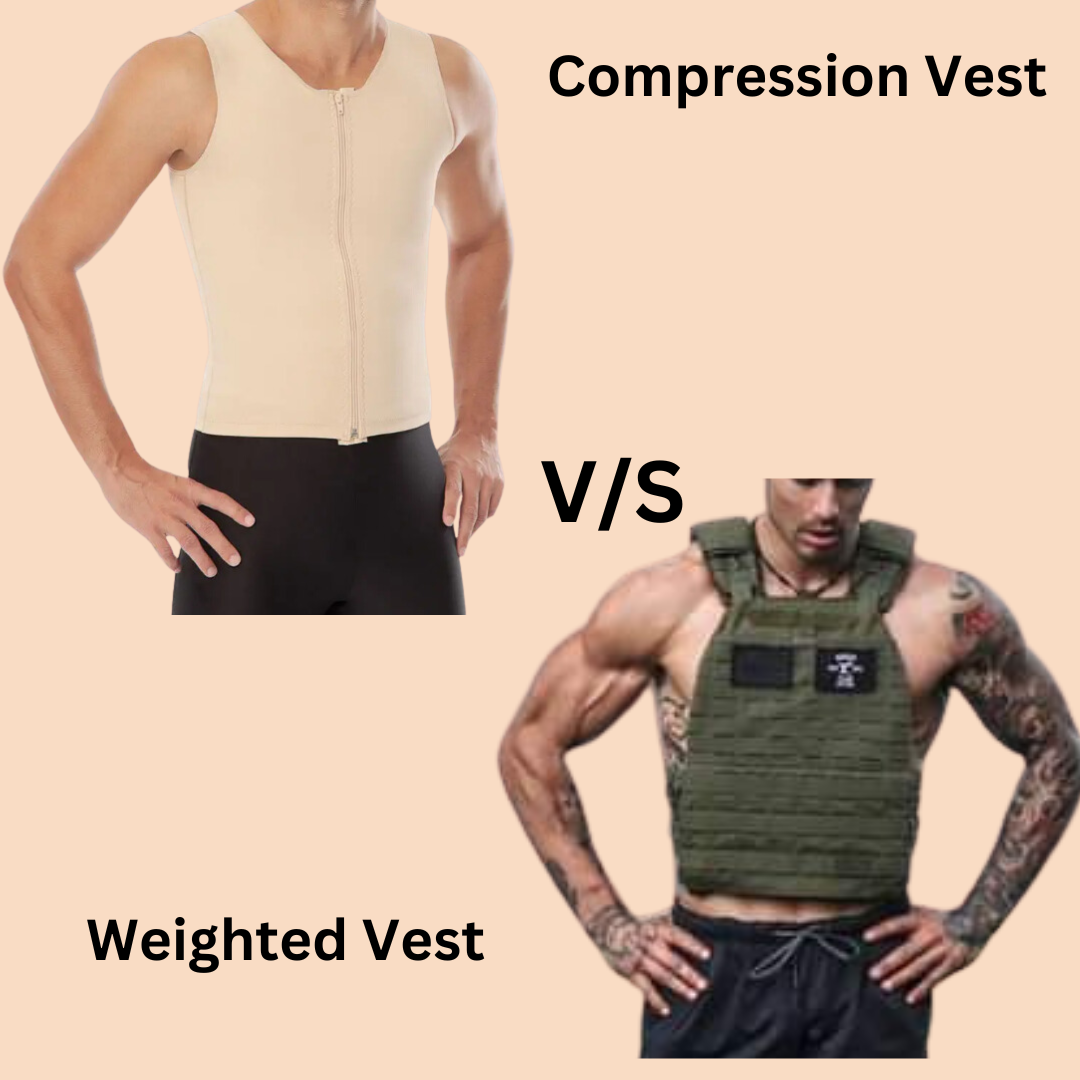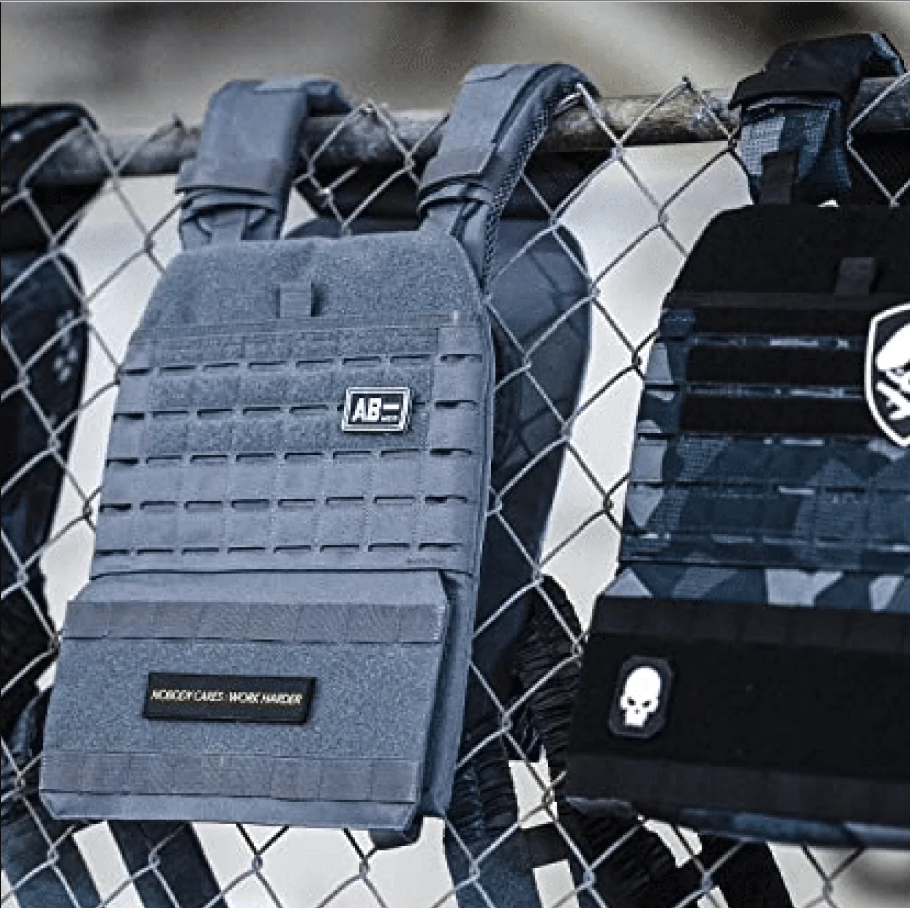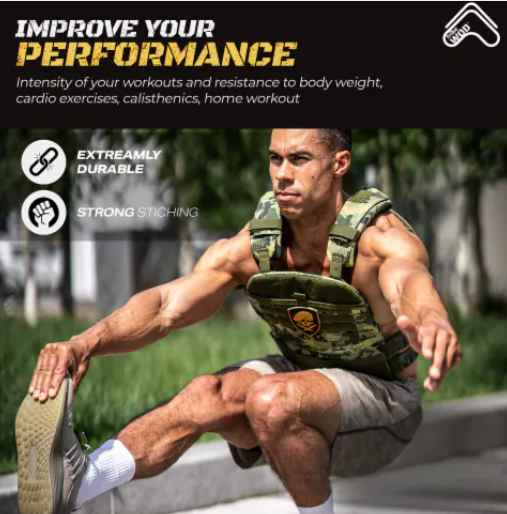When it comes to enhancing your fitness routine, selecting the right gear is essential. Among the myriad options available, compression vests and weighted vests stand out as versatile tools with distinct functions. While both may seem similar at first glance, they serve different purposes and cater to different fitness objectives. In this article, we'll delve deeper into the characteristics of compression vests and weighted vests, highlighting their unique features, benefits, and ideal use cases. By gaining a comprehensive understanding of these two types of vests, you'll be better equipped to choose the gear that aligns with your fitness aspirations and lifestyle.
Compression vests and weighted vests are both popular pieces of fitness equipment, but they serve different purposes and offer unique benefits. Understanding the differences between these two types of vests can help individuals make informed decisions about which one best suits their needs and fitness goals.
Understanding Weighted Vest

A weighted vest is a piece of fitness equipment designed to add resistance to various exercises by incorporating additional weight directly onto the body. Unlike a compression vest, which primarily focuses on providing support and compression, a weighted vest is intended to increase the intensity of workouts by imposing a greater load on the muscles and cardiovascular system.
Weighted vests typically consist of a garment-like vest with pockets or compartments where small weights, such as sandbags or metal plates, can be inserted or removed to adjust the overall load. The weight of the vest can vary widely, ranging from a few pounds to as much as 50 pounds or more, depending on the individual's fitness level and training goals.
The primary purpose of a weighted vest is to challenge the body during exercises by making movements more demanding and requiring greater effort from the muscles. By adding resistance, weighted vests can help individuals build strength, improve endurance, and enhance overall fitness levels more efficiently than bodyweight exercises alone.
Weighted vests are commonly used in a variety of fitness activities, including bodyweight exercises such as squats, lunges, push-ups, and pull-ups, as well as cardiovascular activities like walking, running, or hiking. They can also be incorporated into functional training routines, agility drills, and plyometric exercises to increase the difficulty and effectiveness of the workouts.
One of the key benefits of using a weighted vest is its versatility. Unlike traditional strength training equipment, such as dumbbells or barbells, a weighted vest allows for freedom of movement and can be easily adjusted to suit different exercises and fitness levels. Additionally, weighted vests are compact and portable, making them convenient for use at home, in the gym, or even outdoors.
While weighted vests can offer significant benefits for improving strength, endurance, and overall fitness, it's essential to use them safely and effectively. Beginners should start with lighter weights and gradually increase the load as they become accustomed to the added resistance. Proper form and technique should always be prioritized to prevent injury and maximize the benefits of using a weighted vest.
Benefits of Weighted Vests
Weighted vests offer numerous benefits, including:
-
Increased Intensity
-
Improved Strength
-
Enhanced Endurance
-
Calorie Burn
-
Bone Density Enhancement
-
Postural Improvement
-
Versatility
-
Convenience
Weighted vests are compact and portable, allowing for convenient use at home, in the gym, or even outdoors. They can easily be incorporated into existing workout routines for added challenge and variety.
Overall, weighted vests are a valuable fitness tool that can help individuals achieve their strength, endurance, and weight loss goals more effectively.
What is a Compression Vest?
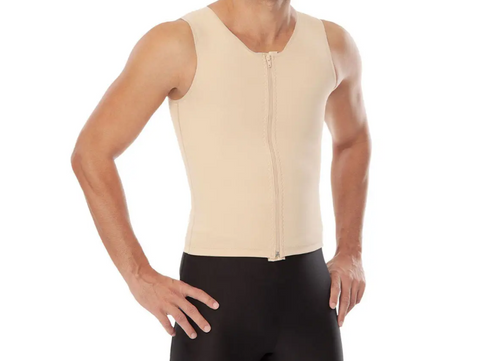
A compression vest, also known as a compression shirt or compression garment, is a form-fitting piece of clothing designed to apply gentle pressure to specific areas of the body. It is typically made from elastic and breathable materials that conform closely to the contours of the wearer's body. Compression vests are commonly used in various contexts, including sports performance, medical rehabilitation, and everyday wear.
The primary purpose of a compression vest is to provide support, stability, and compression to targeted muscle groups and tissues. By exerting gentle pressure, compression vests can promote better circulation, reduce muscle fatigue, and enhance proprioception—the body's awareness of its position in space. Additionally, compression garments are often worn during recovery from injuries or surgeries to aid in the healing process and minimize swelling and inflammation.
In the realm of sports and fitness, compression vests are popular among athletes and fitness enthusiasts for their potential performance-enhancing benefits. Some research suggests that wearing compression garments during exercise may improve blood flow to the muscles, increase oxygen delivery, and reduce muscle vibration, thereby enhancing endurance and recovery. Compression vests are also used to provide support to the core and trunk muscles during dynamic movements and heavy lifting exercises.
Furthermore, compression vests are sometimes recommended for individuals with certain medical conditions, such as lymphedema, venous insufficiency, or postural problems. These garments can help alleviate discomfort, improve circulation, and provide gentle support to affected areas of the body.
Overall, a compression vest serves as a versatile tool for promoting comfort, support, and performance across various activities and situations. Whether used for athletic pursuits, rehabilitation, or everyday wear, compression vests offer a blend of functionality, comfort, and therapeutic benefits.
Benefits of Compression Vests
Compression vests offer several benefits, including:
-
Improved Circulation
-
Reduced Muscle Soreness
-
Enhanced Comfort
-
Muscle Recovery
-
Postural Support
-
Anxiety Relief
Overall, compression vests offer a range of benefits that can contribute to improved physical performance, comfort, and well-being during both exercise and everyday activities.
Key Difference between Weighted and Compression Vests
|
Aspect |
Compression Vests |
Weighted Vests |
|
Purpose |
Provide gentle pressure and support |
Add resistance to workouts |
|
Mechanism of Action |
Apply even pressure to the body |
Add external resistance to exercises |
|
Usage |
Suitable for athletes, individuals with sensory processing disorders, or those experiencing anxiety |
Ideal for strength training, cardio, and functional movements |
|
Benefits |
Promote better circulation, muscle recovery, and comfort |
Enhance strength, endurance, and calorie burn |
|
Additional Benefits |
Can help improve posture and proprioception |
Can improve bone density and increase intensity of workouts |
Choosing the Right Vest for Your Needs
Assess Your Goals
Before selecting a vest, it's essential to understand your fitness objectives. Are you aiming to improve endurance, strength, or overall fitness? Determining your goals will guide you in choosing the type of vest that aligns best with your needs. If you prioritise support and comfort during workouts, a compression vest might be suitable. On the other hand, if you're looking to add resistance and intensity to your exercises, a weighted vest could be more appropriate. Understanding your goals will ensure that the vest you choose enhances your workout experience rather than hindering it.
Consider Your Activities
Different types of vests are designed for specific activities and exercises. For example, if you primarily engage in cardiovascular activities such as running or cycling, a lighter-weight vest like compression vest with breathable fabric might be preferable to ensure freedom of movement and comfort. Conversely, if you focus on strength training or bodyweight exercises, a heavier weighted vest with adjustable weights might provide the resistance needed to challenge your muscles effectively. By considering the activities you participate in regularly, you can select a vest that enhances your performance and supports your fitness goals.
Consult with a Professional
If you're unsure about which vest is suitable for your needs, seeking guidance from a fitness trainer, therapist, or medical professional can be beneficial. These experts can assess your current fitness level, discuss your goals, and provide personalised recommendations based on your individual needs and limitations. A fitness trainer can also demonstrate proper techniques for using a weighted vest safely to prevent injury and maximise results. Additionally, consulting with a medical professional is crucial if you have any pre-existing medical conditions or concerns that may impact your ability to use a vest effectively. Their expertise can help ensure that you select a vest that supports your health and well-being while helping you achieve your fitness goals safely.
By thoroughly assessing your goals, considering your activities, and consulting with professionals, you can choose the right vest that enhances your workouts and supports your overall fitness journey. Whether you opt for a compression vest for support or a weighted vest for resistance, selecting the appropriate vest will contribute to a more effective and enjoyable exercise experience.
Conclusion
In conclusion, when it comes to choosing between compression vests and weighted vests, understanding your fitness goals and considering your activities are paramount. Both types of vests offer unique benefits and serve different purposes in enhancing your workout routine. A compression vest provides gentle pressure and support, making it ideal for promoting circulation, reducing muscle soreness, and aiding in recovery, while a weighted vest adds resistance to exercises, effectively increasing intensity, strength, and calorie burn.
Assessing your goals and considering the activities you engage in regularly will help determine which type of vest is best suited for your needs. Whether you prioritise support and comfort or resistance and intensity, selecting the right vest is essential for optimising your workout experience and achieving your fitness objectives.
Consulting with fitness professionals or medical experts can provide valuable guidance in choosing the most suitable vest based on your individual circumstances and limitations. By taking these factors into account and making an informed decision, you can select the appropriate vest that aligns with your fitness goals, enhances your performance, and contributes to a safe and effective workout regimen. Whether it's a compression vest for support or a weighted vest for resistance, the right choice will ultimately lead to a more enjoyable and rewarding fitness journey.
